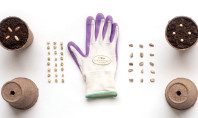8 Steps to a Successful Home Office
Do you have a home office? Most households do, whether it is used for the family computer, managing a home-based business, working from home, or taking classes online. The ‘office’ can be something as mobile as wherever you place your laptop (e.g. the kitchen counter, the dining room table), a specific space (the corner of a room, a converted closet), or a dedicated room (which may also serve double-duty as the guest room or exercise space).
If you answered “yes” to the above question, when you picture that space in your mind, does it bring a sense of peace and calm, or does it bring on stress and a need to run the other way? Here are some suggestions for organizing your existing space or setting up a new home office space for efficiency and effectiveness.
1. Hide the cords when you can. Visual clutter can impact your ability to start or continue working. Buy a wireless (wifi) printer. What’s great is that it is across the room, because it doesn’t have to be tethered to the computer. You can also print to it when you’re on your laptop elsewhere in the house.
2. Create a filing system that works for you. If you need to keep things (whether digitally or physically), use a system that makes sense for you. If it makes sense in your brain to file “household items” under “H” then go for it! If you prefer a more detailed system (e.g. utilities, insurance, mortgage, taxes), then use those categories. Make a system that conforms to you, vs. trying to conform to a store-bought system.
3. Have a place for everything and put things back! The tape dispenser should always go back on your desk, even if you’ve used it in the dining room to wrap presents. Ink and paper always goes underneath the printer. Reference books are always returned to the same shelf. You get the idea. And please, throw out anything that doesn’t work (like those pens you brought home from that conference you went to).
4. Location, location, location. You’ll likely spend many hours in your home office, so don’t stiff yourself on space (e.g. squishing a tiny desk into a windowless closet to preserve the rarely-used guest room). Also consider traffic flow and your ability to withstand distractions. Do you work best in the thick of activity, or should your office be tucked away in a quiet space? If clients will be stopping by, a private space with ample seating is a must. Are you sharing your office with other family members? Consider what makes sense for all involved.
If you’re going to be spending significant time in your home office, that folding chair from the garage, or that side chair from the dining set you no longer have isn’t going to cut it.
5. Invest in a good chair. If you’re going to be spending significant time in your home office, that folding chair from the garage, or that side chair from the dining set you no longer have isn’t going to cut it. More likely, you’re going to do yourself more harm than good. Go and find something that is suitably sized, adjustable for height, and comfortable.
6. Think vertically. If space is at a premium in your office, don’t forget about the vertical space. Open shelving, tall bookcases, or even cabinetry can enable you to be organized and also have additional storage for the items you’ll need to have on hand. Whether you need space for client files, school projects, reference materials or office supplies, remember to look up. Look to the internet for a host of ideas and suggestions for maximizing space in this as well as other places in your home.
7. Don’t forget about lighting! One of the most important elements of a successful home office is appropriate and sufficient lighting. Overhead lighting is good to get the space bright in a general way, however task lighting is where it’s at. Focused, bright light can make a difference not just in how the space feels, but also in your ability to get work done. Dimmable lighting is even better. And if your space has a window, thing about where you’re placing your computer so you’re minimizing glare.
8. Have a clear space to work. Always leave your home office with a clean workspace. Stack up current work in nice, organized stacks on the corner of a desk or adjacent table. The space may be chaotic while you’re working but always leave it inviting for the next work day.
One final tip: Surround yourself with things that make you feel good. Framed photographs of family, friends or that great vacation you went on, or a memento from college or childhood are great ideas. Scented candles, or a vase with fresh flowers, can put you in a “happy place.”
Implementing even a few of these ideas will put you on the path to success!














